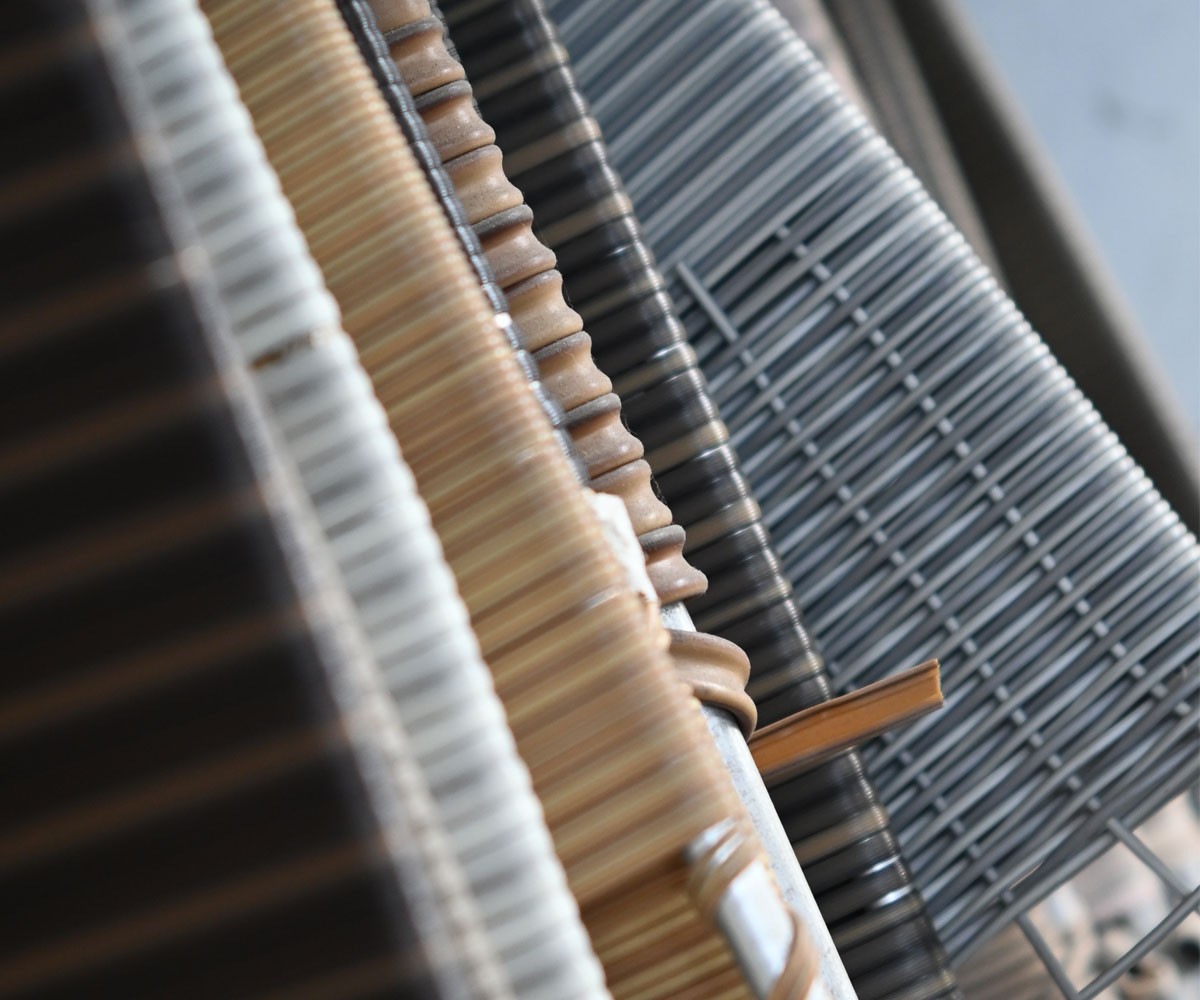The world of weaving has undergone a significant transformation over the centuries, evolving from ancient techniques using natural materials to a modern industry driven by innovation. Weaving is no longer just a craft; it has become an essential component of the furniture and interior-exterior decoration industries. NEXTOUCH is coming with the ultimate choice in manufacturing synthetic weaving materials for modern industry.
At the heart of this revolution are synthetic rattan and rope, materials that have redefined quality, durability, and aesthetic appeal in weaving. In this article, we’ll delve into the history of weaving materials, explore the latest advancements in synthetic options, and uncover how these materials are shaping high-quality weaving products.
A Brief History of Weaving Materials in Industry
Weaving is one of humanity’s oldest arts, dating back thousands of years. In its earliest days, natural materials such as reeds, grasses, and animal fibers were used to create baskets, mats, and textiles. As societies progressed, weaving became a critical industry, with materials like wool, cotton, and flax dominating the scene.
The 20th century marked a turning point with the introduction of synthetic fibers like nylon and polyester. These materials brought new possibilities, offering greater strength, flexibility, and resistance to environmental factors. However, it wasn’t until recent decades that synthetic materials like rattan and rope gained prominence in the weaving industry, particularly in furniture and decoration.
The Rise of Synthetic Rattan and Rope
The most common types of synthetic weaving materials are two, namely:
Synthetic Rattan: Synthetic rattan is a man-made material designed to mimic the appearance and texture of natural rattan. It is crafted from polyethylene or other high-quality plastics, offering several advantages over its natural counterpart. Unlike natural rattan, which can be prone to cracking, warping, and degradation under harsh weather conditions, synthetic rattan is highly durable and resistant to UV rays, moisture, and temperature fluctuations. This makes it an ideal choice for both indoor and outdoor furniture.
Synthetic Rope: Synthetic rope, often made from materials like polypropylene, nylon, or polyester, has become another game-changer in weaving. Known for its strength, flexibility, and resistance to wear and tear, synthetic rope is widely used in modern weaving projects. Its smooth texture and vibrant color options make it a popular choice for contemporary furniture and decorative items.
Advancements in Synthetic Weaving Materials
The latest advancements in synthetic rattan and rope have further enhanced their appeal, enabling the creation of high-quality weaving products that are both functional and stylish. Here are some notable features:
Enhanced Durability: Modern synthetic rattan and rope are engineered to withstand prolonged exposure to the elements. They resist fading, cracking, and fraying, ensuring that woven products maintain their integrity and appearance over time.
Eco-Friendly Options: Sustainability is a growing concern in the industry, leading to the development of eco-friendly synthetic materials. Recycled plastics and biodegradable options are now available, reducing the environmental impact of production.
Versatile Designs: Advances in manufacturing techniques allow synthetic rattan and rope to be produced in a wide range of textures, patterns, and colors. This versatility enables designers to create unique, eye-catching pieces that cater to diverse tastes and preferences.
Lightweight and Easy Maintenance: Synthetic materials are lightweight, making them easy to handle and transport. They also require minimal maintenance, as they can be cleaned with simple soap and water.
Fire and Pest Resistance: Synthetic options are often treated to be fire-retardant and resistant to pests, such as termites, further enhancing their practicality and safety.

Applications in Furniture and Decoration
Synthetic rattan and rope have opened up new possibilities in the design and production of furniture and decorative items. Their combination of aesthetic appeal and functional benefits makes them ideal for a variety of applications, including:
Outdoor Furniture: Synthetic rattan is a favorite choice for outdoor sofas, chairs, and dining sets due to its weather-resistant properties. It retains its beauty and comfort even in harsh climates.
Interior Accents: Woven synthetic rope adds a modern touch to interior decor, being used for lampshades, wall hangings, and room dividers. Its vibrant colors and sleek finish complement contemporary spaces.
Commercial Spaces: Hotels, resorts, and cafes often feature synthetic rattan and rope furniture to create inviting and durable spaces for guests.
The Future of Weaving Materials
The future of weaving materials lies in continuous innovation and sustainability. With advancements in technology, we can expect even more durable, eco-friendly, and aesthetically pleasing synthetic options. These materials will continue to push the boundaries of design, enabling creators to craft exceptional products that stand the test of time.
In conclusion, synthetic rattan and rope have revolutionized the weaving industry, offering unparalleled durability, versatility, and style. By embracing these modern materials, the industry is set to produce high-quality furniture and decorations that not only meet but exceed consumer expectations. Whether you’re furnishing a cozy home or designing a luxurious outdoor space, synthetic weaving materials are the key to achieving both beauty and functionality.


